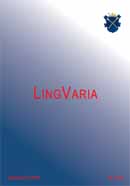Czy i jak historia języka może skorzystać z propozycji kognitywizmu?
Whether and how history of language may use a cognitive framework?
Author(s): Irena BajerowaSubject(s): Language and Literature Studies
Published by: KSIĘGARNIA AKADEMICKA Sp. z o.o.
Summary/Abstract: History of language as a scholarly discipline should not ignore emergent academic paradigms. This view forces us to consider whether cognitive linguistics offers any methodological proposals which could be used in the study of the history of language. It may be thought that it does, if only because this branch of study emphasizes links between extralinguistic realities and concepts which categorize it and, further, give it linguistic forms. The author is of the opinion that it would be good to use, say, the theory of a linguistic picture of the world developed by Jerzy Bartmiński and the Lublin school. A look at the attainments of history of the Polish language shows that it still has not developed a comprehensive description of the evolution of semantics and lexicon. Also lacking, despite the number of works at the Silesian University, is a comprehensive description of the evolution of the Polish derivational system. It might be useful to use the suggestion of Renata Grzegorczykowa to develop a derivational description which would define this part of language as a set of conceptual categories reflecting a cognitive interpretation of the world. It could paint a synthetic picture of the history of the derivational system which would be closely related to the speaker, his circumstances, needs, and capacities. Another benefit would be to apply the prototype theory. The commonness of prototypes must attract the attention of a historian of language for whom this theory will provide a basis to form statements about active tendencies to highlight form or category. The highlighting is in emphasizing qualities characteristic for a category, i.e., an assimilation to a typical, representative element. To define this element as a prototype emphasizes it as being typical, because a prototype is considered an essential pattern. This is an easier way explain the tendency to highlight expression which often guides the evolution of language.
Journal: LingVaria
- Issue Year: 2010
- Issue No: 10
- Page Range: 37-44
- Page Count: 8
- Language: Polish

